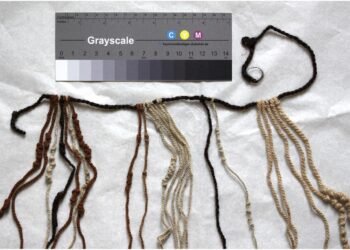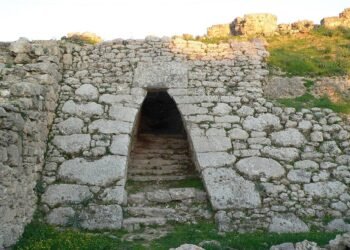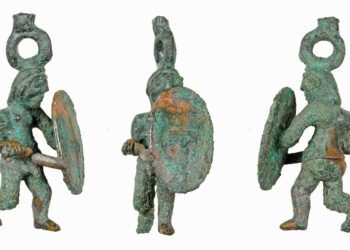An analysis of genomes from a 4,500-year-old collective tomb at Bréviandes-les-Pointes, near Troyes in France, has revealed that the genetic legacy of ancient migrations and population mixing is still evident in present-day Europeans.
The human genome, composed of all the genetic information carried by our DNA, reflects the history of our ancestors. The genome of modern Europeans formed over more than 40,000 years through various migrations and interbreeding events. Initially, Europe was populated by hunter-gatherers until around 8,000 years ago, when farmers from Anatolia and the Aegean region arrived, introducing agriculture and animal domestication. These Neolithic farmers interbred with local hunter-gatherers, significantly contributing to the European gene pool.

Around 5,000 to 4,000 years ago, a third major genetic component was introduced by nomadic populations from the Pontic-Caspian steppes, north of the Black Sea. These nomads migrated into Europe, interbreeding with local Neolithic populations. This complex history is reflected in the genomes of contemporary Europeans.
Sequencing ancient DNA presents unique challenges due to the fragmentation and sparsity of genetic material. The team at the Institut Jacques Monod, however, optimized their methods to obtain reliable results. They analyzed the genomes of seven individuals from the Bréviandes tomb, in conjunction with bone morphology studies conducted by anthropologists from Inrap.
The analysis revealed that the tomb contained the remains of: A woman over 60 years old, her son, an adult male aged 20-39, her grandson, aged 4-8, the grandson’s mother, aged 20-39, A young woman aged 20-39, the young woman’s newborn, and a child aged 6-10.
Interestingly, the last three individuals were not related to the others, and the final child was not related to anyone else in the tomb. This suggests that the tomb did not belong to a single biological family. All female individuals carried a hereditary component typical of southern France and southwestern Europe, possibly explaining their collective burial despite different biological origins.
The adult man’s genome revealed a mix of his mother’s Neolithic heritage from France and his father’s genome from the steppe nomads north of the Black Sea. These nomads had migrated into central Europe around 5,000 years ago, interbreeding with local populations before moving further north and northwest. This discovery offers a near “real-time” view of the introduction of the steppe nomads’ genome into the Neolithic population of the area.
Further analysis of ancient genomes from other European regions allowed researchers to model the migrations of steppe peoples. Results suggest two major waves of interbreeding during the 3rd millennium BCE. The first wave involved steppe nomads and Neolithic farmers of the globular amphora culture in eastern and central Europe around 4,900 years ago. Their mixed-race descendants developed the “corded ware” culture, characterized by clay vases imprinted with cords before firing and the burial of the dead in individual tombs. This practice spread eastward and northward in Europe, with individuals from the mixed Neolithic-steppe population primarily reproducing among themselves rather than with native farming populations.
A second wave of interbreeding occurred 300 to 400 years later in western Europe, around 4,550 years ago. In both waves, migrant men commonly interbred with native women. The Bréviandes tomb represents the beginning of this second wave.
Additionally, the study analyzed the burial of an adult man at Saint-Martin-la-Garenne, east of Paris. This man was buried with a shale wrist-guard, an archer’s accessory indicating high social status, typical of the Bell Beaker culture (BBC). This culture spread throughout Europe and North Africa and is characterized by its distinctive bell-shaped pottery. The man’s genome showed more steppe ancestry on his mother’s side, suggesting organized matrimonial networks with groups carrying more steppe ancestry. By the end of the Bell-Beaker period around 2000 BCE, most men analyzed had the Y chromosome of the steppe peoples, a trait still common among French males today.
The two most intense phases of genetic mixing between steppe migrants and indigenous populations are linked to the emergence of the corded ware and Bell-Beaker cultures. These encounters and interbreeding events contributed significantly to the genetic makeup of modern Europeans.























